Memory and the Archive
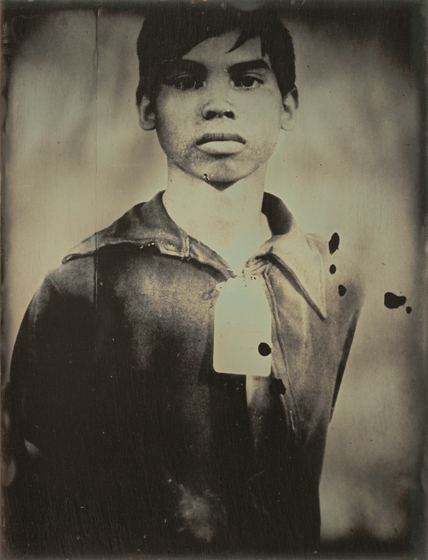
Binh Danh, American, born Vietnam, 1977, Ghost of Tuol Sleng, Genocide Museum #1, 2008, daguerreotype, 21.59 × 16.51 cm (8 ½ × 6 ½ in.), 2012.43.1
The Khmer Rouge created an unsettling photographic record of inmates at the notorious high school turned prison in Phnom Penh where the regime detained, interrogated, tortured, and executed Cambodian and Vietnamese victims during the brutal rule of Pol Pot (1975–1979). More than 6,000 passport-sized photographs and negatives of bound and tagged prisoners taken by the Khmer Rouge (only a fraction of the total number of inmates) are now housed in archives at the Tuol Sleng Genocide Museum, which occupies the site of the former prison. In 2008 Danh mined this archive, rephotographing some of these pictures to recall the atrocities and commemorate the victims. Although the prisoner in this photograph remains anonymous, Danh restored a sense of dignity to him, reproducing the image as a one-of-a-kind daguerreotype and reframing the picture as a reverential memorial rather than a dispassionate record of inhumanity.
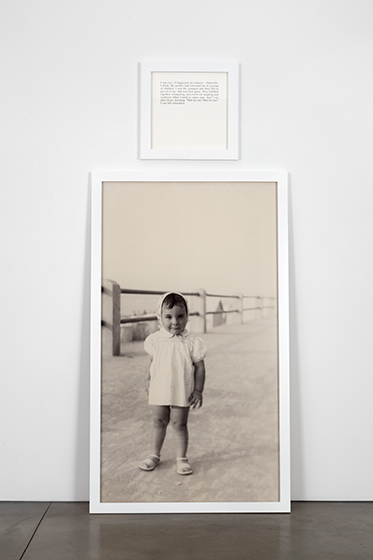
Sophie Calle, French, born 1953, Autobiographies (Wait for Me), 2010, two inkjet prints, photograph: 170.18 × 99.06 cm (67 × 39 in.), text panel: 49.53 × 49.53 cm (19 ½ × 19 ½ in.), © 2014 Artists Rights Society (ARS), New York/ADAGP, Paris, courtesy of Sophie Calle and Paula Cooper Gallery, photograph Steven Probert, 2013.58.1
The young girl’s charming half-smile and old-fashioned dress seduce viewers into a sense of sweet nostalgia, but the text about the cruel games of childhood suggests other forces at play. The first-person narrative, the title’s invocation of autobiography, and viewers’ predisposition to accept the truthfulness of photography all imply that the girl in the photograph is the artist and the written words are hers. Yet Calle offers no proof that she is exploring her own personal archive of photographs, that she is the young girl depicted, or that these are in fact her own memories, reminding us that photography’s history is one of both documentation and deception.
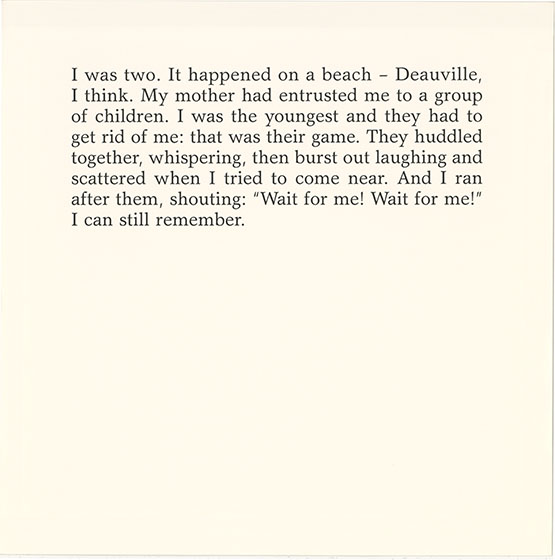
Text panel detail from Sophie Calle, Autobiographies (Wait for Me), 2010, inkjet print, © 2014 Artists Rights Society (ARS), New York/ADAGP, Paris, courtesy of Sophie Calle and Paula Cooper Gallery, photograph Steven Probert
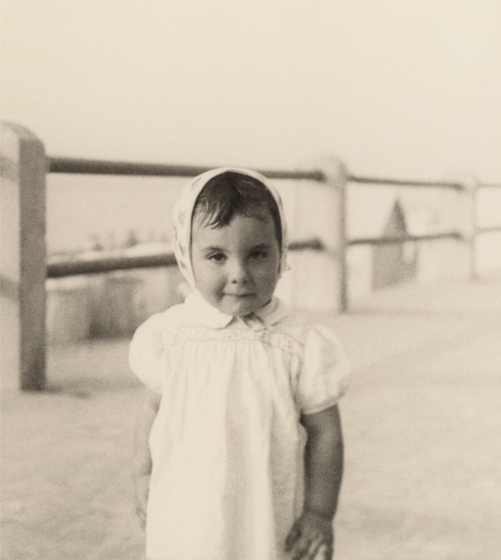
Detail from Sophie Calle, Autobiographies (Wait for Me), 2010, inkjet print, © 2014 Artists Rights Society (ARS), New York/ADAGP, Paris, courtesy of Sophie Calle and Paula Cooper Gallery, photograph Steven Probert
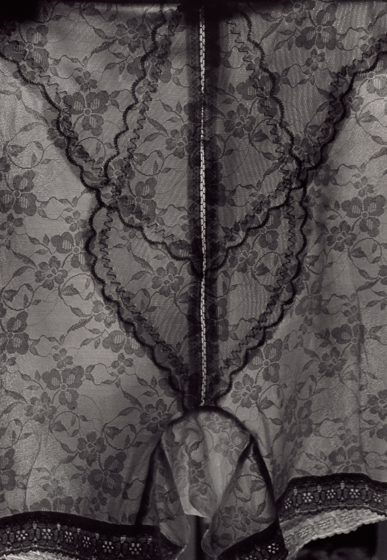
Ishiuchi Miyako, Japanese, born 1947, Mother’s #24, 2001, gelatin silver print, 2014, 107.5 × 74 cm (42 5/16 × 29 1/8 in.), © Ishiuchi Miyako, courtesy Michael Hoppen Gallery
Intrigued by the way objects evoke memories, Ishiuchi sifted through the inventory of her recently deceased mother’s most intimate belongings, finding items that directly touched her skin and still bore her imprint, such as lingerie, lipstick, and shoes. “What I have now,” she explains, “are the only things that my mother left behind for me. I bring them out into the light one by one, to impress their image onto a photograph as a farewell to her.” To create the two prints seen here, Ishiuchi taped the silky slip and girdle onto sliding glass doors, allowing light from her garden to filter through them. The delicate pictures make public not only the intimate undergarments, but also the private experience of mourning.
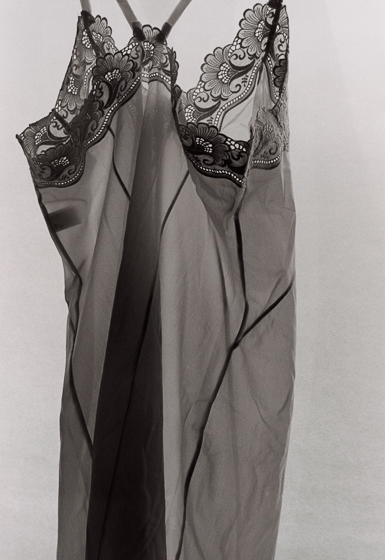
Ishiuchi Miyako, Japanese, born 1947, Mother’s #49, 2002, gelatin silver print, 2014, 107.5 × 74 cm (42 5/16 × 29 1/8 in.), © Ishiuchi Miyako, courtesy Michael Hoppen Gallery
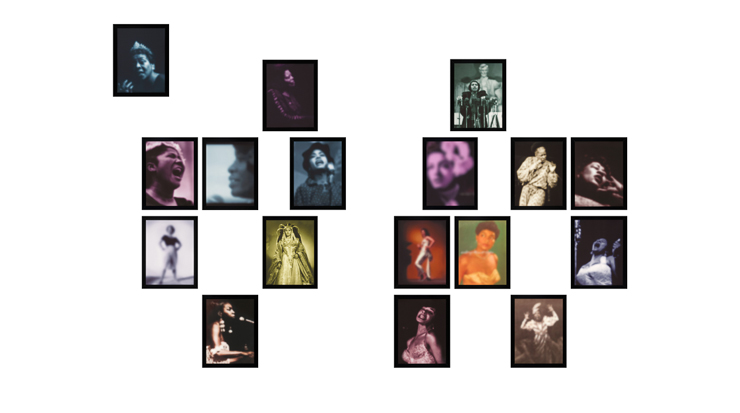
Carrie Mae Weems, American, born 1953, Slow Fade to Black II, 2010, 17 inkjet prints, each: 33.18 × 25.56 cm (13 1/16 × 10 1/16 in.), © Carrie Mae Weems, courtesy of the artist and Jack Shainman Gallery, New York, 2014.84.1-17
In Slow Fade to Black II Weems manipulated publicity shots of African American female performers who rose to fame in the first half of the 20th century, including such notables as Marian Anderson, Ella Fitzgerald, Billie Holiday, and Mahalia Jackson. By blurring these publicity stills, Weems acknowledges both the artists' diminishing fame and the cinematic fade (the transition of an image to a blank screen). As she notes, "These women have given us a gift and a legacy, and yet we have forgotten them. They are disappearing, dissolving before our eyes." By bringing them back to a place of honor at center stage, Weems reminds us of the important role these women had in shaping 20th-century American cultural identity.
(left to right)
Top row: Dinah Washington, Mary Lou Williams, Marian Anderson
Second row: Mahalia Jackson, Koko Taylor, Abbey Lincoln, Billie Holiday, Betty Carter, Ella Fitzgerald
Third row: Dorothy Dandridge, Leontyne Price, Dorothy Dandridge, Pearl Bailey, Dinah Washington
Bottom row: Nina Simone, Shirley Bassey, Ethel Waters
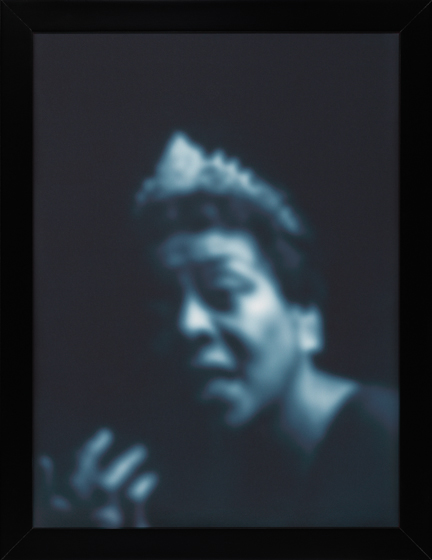
Detail of Dinah Washington from Carrie Mae Weems, Slow Fade to Black II, 2010, inkjet print, 33.18 × 25.56 cm (13 1/16 × 10 1/16 in.), © Carrie Mae Weems, courtesy of the artist and Jack Shainman Gallery, New York
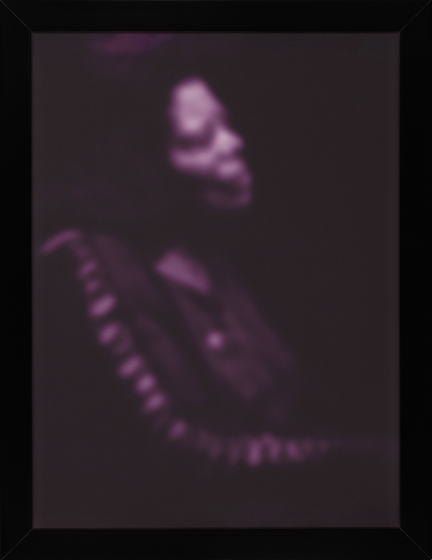
Detail of Mary Lou Williams from Carrie Mae Weems, Slow Fade to Black II, 2010, inkjet print, 33.18 × 25.56 cm (13 1/16 × 10 1/16 in.), © Carrie Mae Weems, courtesy of the artist and Jack Shainman Gallery, New York
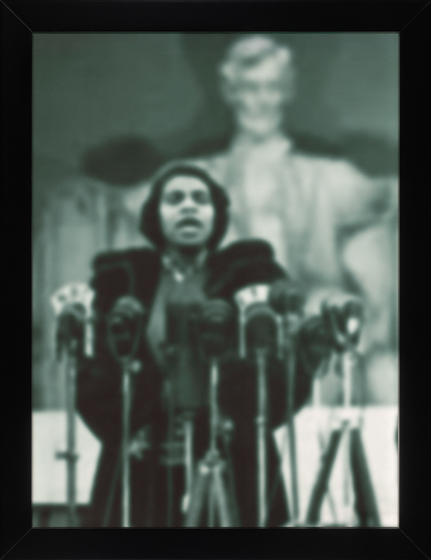
Detail of Marian Anderson from Carrie Mae Weems, Slow Fade to Black II, 2010, inkjet print, 33.18 × 25.56 cm (13 1/16 × 10 1/16 in.), © Carrie Mae Weems, courtesy of the artist and Jack Shainman Gallery, New York
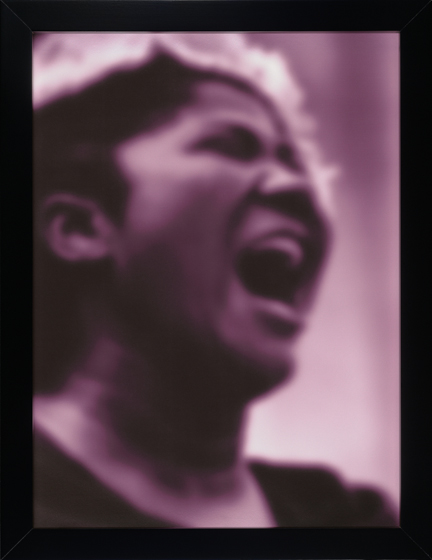
Detail of Mahalia Jackson from Carrie Mae Weems, Slow Fade to Black II, 2010, inkjet print, 33.18 × 25.56 cm (13 1/16 × 10 1/16 in.), © Carrie Mae Weems, courtesy of the artist and Jack Shainman Gallery, New York
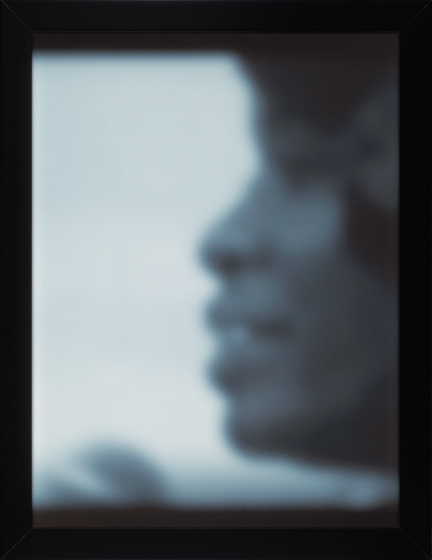
Detail of Koko Taylor from Carrie Mae Weems, Slow Fade to Black II, 2010, inkjet print, 33.18 × 25.56 cm (13 1/16 × 10 1/16 in.), © Carrie Mae Weems, courtesy of the artist and Jack Shainman Gallery, New York
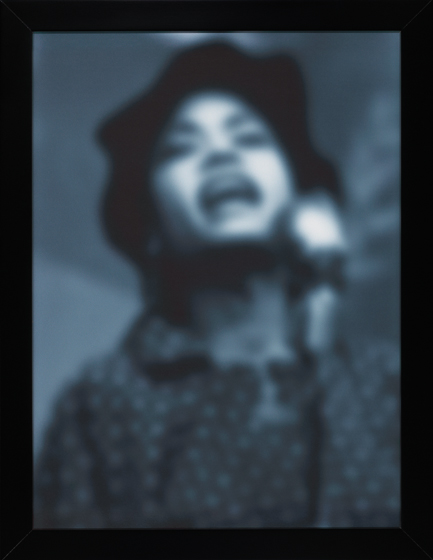
Detail of Abbey Lincoln from Carrie Mae Weems, Slow Fade to Black II, 2010, inkjet print, 33.18 × 25.56 cm (13 1/16 × 10 1/16 in.), © Carrie Mae Weems, courtesy of the artist and Jack Shainman Gallery, New York
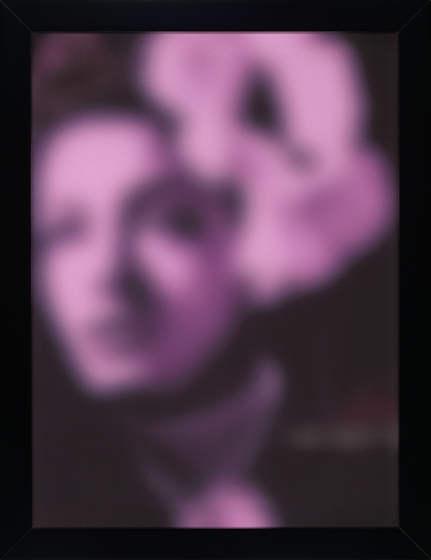
Detail of Billie Holiday from Carrie Mae Weems, Slow Fade to Black II, 2010, inkjet print, 33.18 × 25.56 cm (13 1/16 × 10 1/16 in.), © Carrie Mae Weems, courtesy of the artist and Jack Shainman Gallery, New York
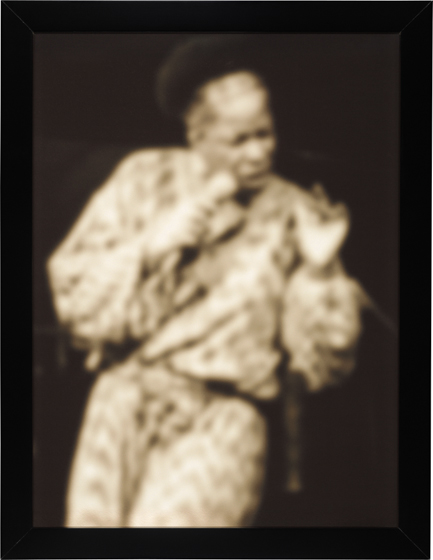
Detail of Betty Carter from Carrie Mae Weems, Slow Fade to Black II, 2010, inkjet print, 33.18 × 25.56 cm (13 1/16 × 10 1/16 in.), © Carrie Mae Weems, courtesy of the artist and Jack Shainman Gallery, New York
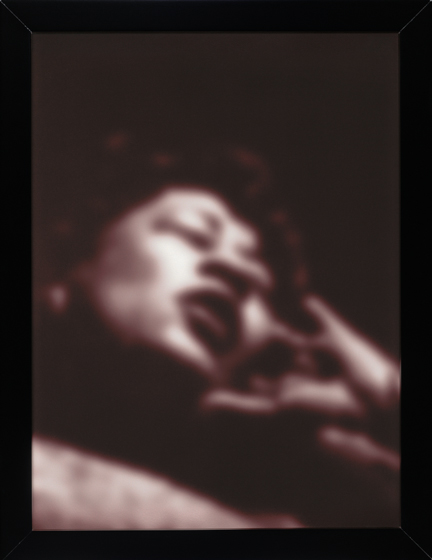
Detail of Ella Fitzgerald from Carrie Mae Weems, Slow Fade to Black II, 2010, inkjet print, 33.18 × 25.56 cm (13 1/16 × 10 1/16 in.), © Carrie Mae Weems, courtesy of the artist and Jack Shainman Gallery, New York
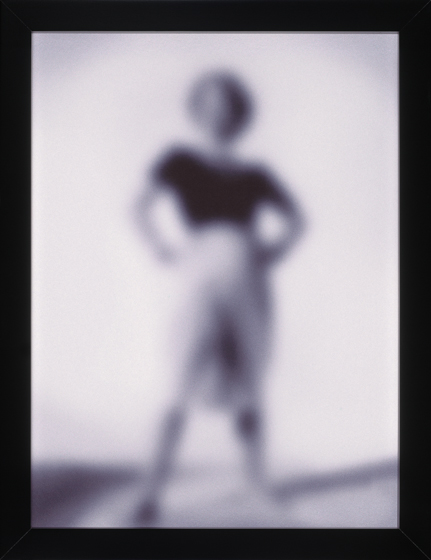
Detail of Dorothy Dandridge from Carrie Mae Weems, Slow Fade to Black II, 2010, inkjet print, 33.18 × 25.56 cm (13 1/16 × 10 1/16 in.), © Carrie Mae Weems, courtesy of the artist and Jack Shainman Gallery, New York
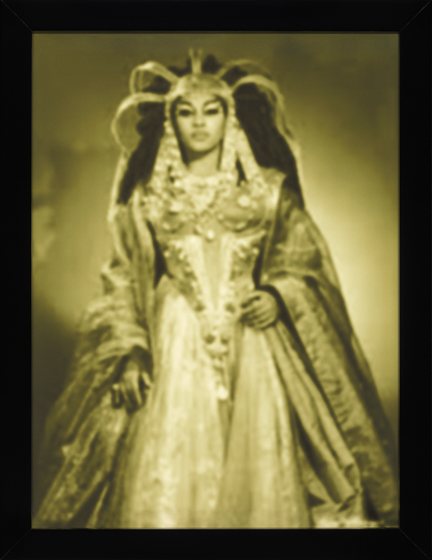
Detail of Leontyne Price from Carrie Mae Weems, Slow Fade to Black II, 2010, inkjet print, 33.18 × 25.56 cm (13 1/16 × 10 1/16 in.), © Carrie Mae Weems, courtesy of the artist and Jack Shainman Gallery, New York
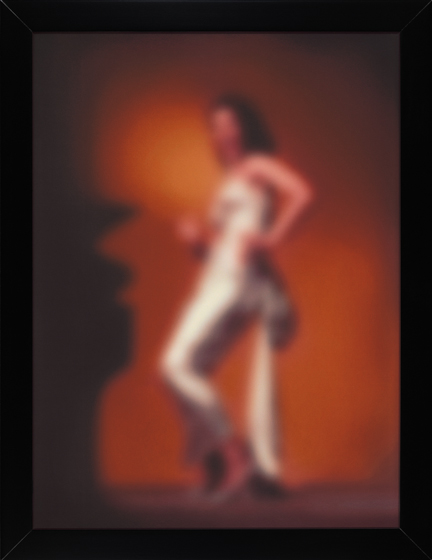
Detail of Dorothy Dandridge from Carrie Mae Weems, Slow Fade to Black II, 2010, inkjet print, 33.18 × 25.56 cm (13 1/16 × 10 1/16 in.), © Carrie Mae Weems, courtesy of the artist and Jack Shainman Gallery, New York
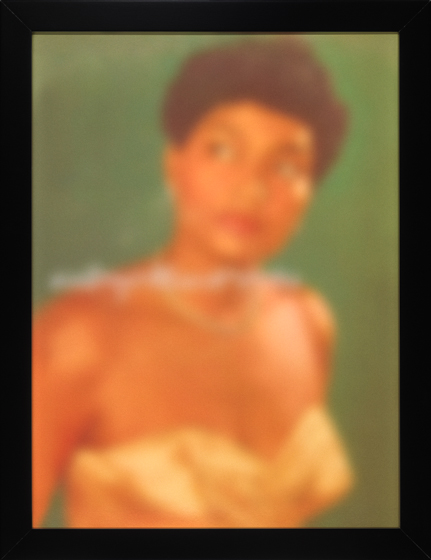
Detail of Pearl Bailey from Carrie Mae Weems, Slow Fade to Black II, 2010, inkjet print, 33.18 × 25.56 cm (13 1/16 × 10 1/16 in.), © Carrie Mae Weems, courtesy of the artist and Jack Shainman Gallery, New York
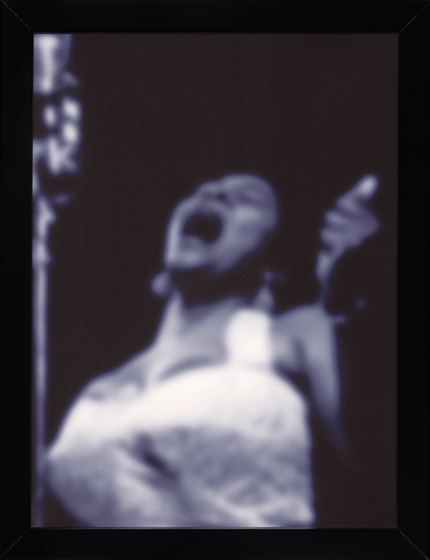
Detail of Dinah Washington from Carrie Mae Weems, Slow Fade to Black II, 2010, inkjet print, 33.18 × 25.56 cm (13 1/16 × 10 1/16 in.), © Carrie Mae Weems, courtesy of the artist and Jack Shainman Gallery, New York
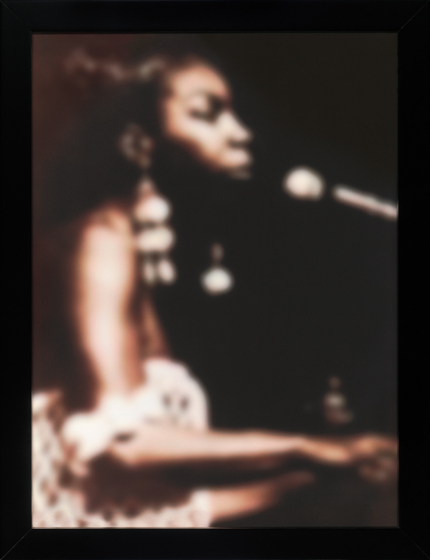
Detail of Nina Simone from Carrie Mae Weems, Slow Fade to Black II, 2010, inkjet print, 33.18 × 25.56 cm (13 1/16 × 10 1/16 in.), © Carrie Mae Weems, courtesy of the artist and Jack Shainman Gallery, New York
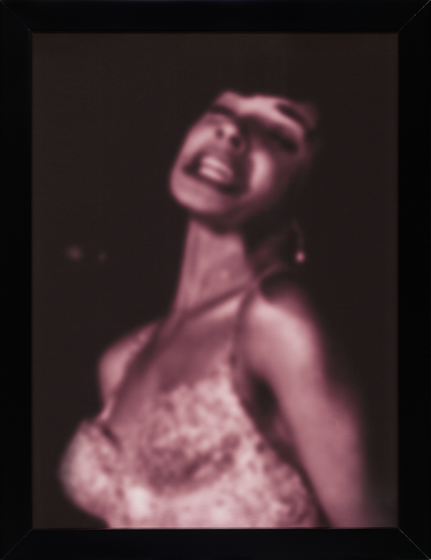
Detail of Shirley Bassey from Carrie Mae Weems, Slow Fade to Black II, 2010, inkjet print, 33.18 × 25.56 cm (13 1/16 × 10 1/16 in.), © Carrie Mae Weems, courtesy of the artist and Jack Shainman Gallery, New York
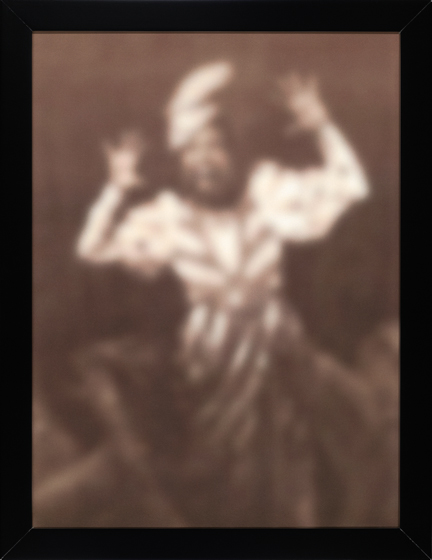
Detail of Ethel Waters from Carrie Mae Weems, Slow Fade to Black II, 2010, inkjet print, 33.18 × 25.56 cm (13 1/16 × 10 1/16 in.), © Carrie Mae Weems, courtesy of the artist and Jack Shainman Gallery, New York

Deborah Luster, American, born 1951, Tooth for an Eye: A Chorography of Violence in Orleans Parish #06-16, 2008–2011, two gelatin silver prints, overall, framed: 68.58 × 159.39 cm (27 × 62 ¾ in.), © Deborah Luster, courtesy of the artist and Jack Shainman Gallery, New York
Focusing on what she described as “the empty, dizzying space at the core of violence,” Luster photographed homicide sites in New Orleans. Removed from the city’s famous French Quarter, the run-down houses and back alleys in her series Tooth for an Eye show parts of the city usually overlooked, producing a disquieting urban chorography (mapping of districts or regions). Although the circular format nods to early photography, it also suggests peepholes or views from a gun scope. The handwritten ledgers that accompany each photograph record the lives lost by gunshot and the cycle of violence at each site: #06-16, for instance, documents four murders, which occurred a week apart in 1993 and later in 2008 and 2009.

Detail from Deborah Luster, Tooth for an Eye: A Chorography of Violence in Orleans Parish #06-16, 2008–2011, gelatin silver print, © Deborah Luster, courtesy of the artist and Jack Shainman Gallery, New York
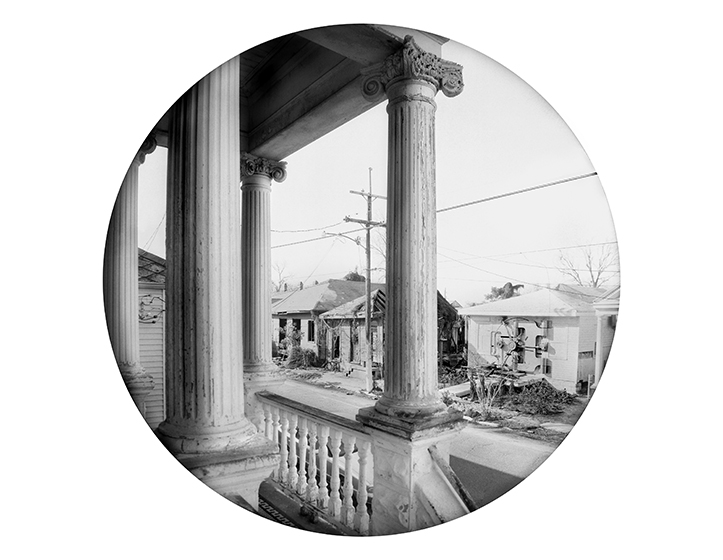
Detail from Deborah Luster, Tooth for an Eye: A Chorography of Violence in Orleans Parish #06-16, 2008–2011, gelatin silver print, © Deborah Luster, courtesy of the artist and Jack Shainman Gallery, New York
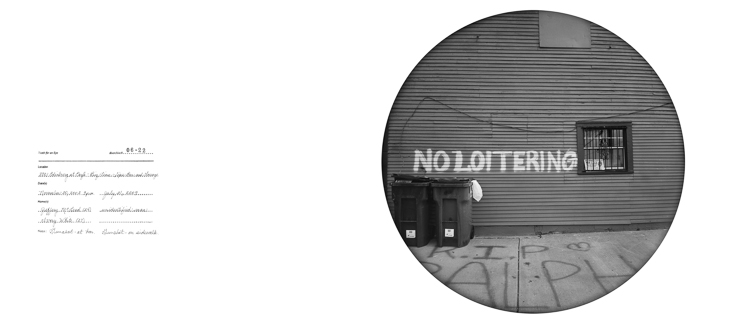
Deborah Luster, American, born 1951, Tooth for an Eye: A Chorography ofViolence in Orleans Parish #06-22, 2008–2011, two gelatin silver prints, overall: 60.96 × 152.4 cm (24 × 60 in.), © Deborah Luster, courtesy of the artist and Jack Shainman Gallery, New York

Detail from Deborah Luster, Tooth for an Eye: A Chorography ofViolence in Orleans Parish #06-22, 2008–2011, gelatin silver print, © Deborah Luster, courtesy of the artist and Jack Shainman Gallery, New York
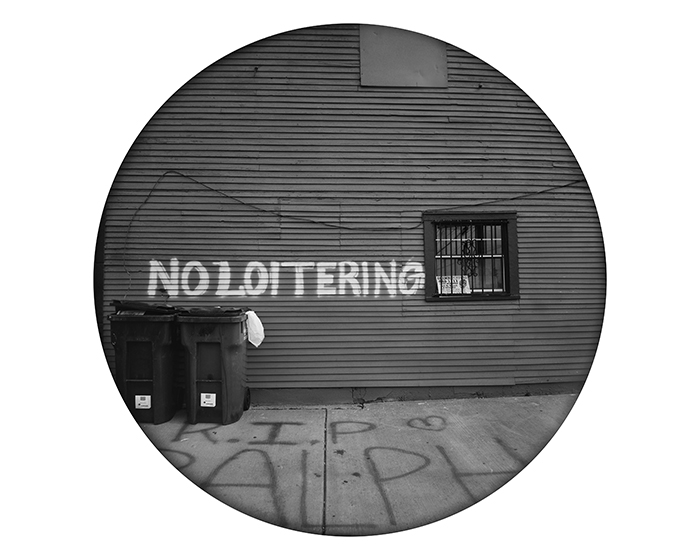
Detail from Deborah Luster, Tooth for an Eye: A Chorography ofViolence in Orleans Parish #06-22, 2008–2011, gelatin silver print, © Deborah Luster, courtesy of the artist and Jack Shainman Gallery, New York